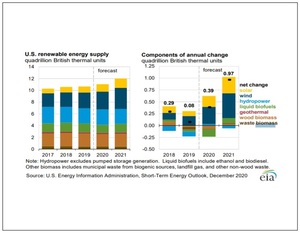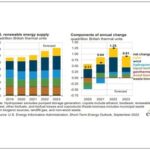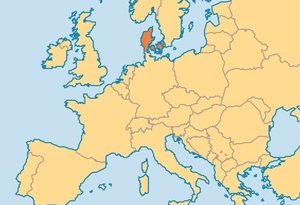EIA updates bioenergy forecasts in December STEO
Energy Disrupter
ADVERTISEMENT
The U.S. Energy Information Administration’s latest Short-Term Energy Outlook, released Dec. 8, predicts electricity generation from renewable energy sources will reach 20 percent in 2020 and 21 percent in 2021, up from 18 percent in 2019.
In the electric power sector, electricity generation from biomass was at 28.1 billion kilowatt hours (kWh) in 2019, including 16.1 billion kWh from waste biomass and 12 billion kWh from wood biomass. Generation from biomass is expected to fall to 27.7 billion kWh this year, including 16.1 billion kWh from waste biomass and 11.7 billion kWh from wood biomass. In 2021, generation is expected to increase to 31.3 billion kWh, including 17.1 billion kWh from waste biomass and 14.2 billion kWh from wood biomass.
Across other sectors, biomass generation was at 29.4 billion kWh last year, including 2.9 billion kWh from waste biomass and 26.5 billion kWh from wood biomass. Generation is expected to fall to 28.8 billion kWh in 2020, including 2.8 billion kWh from waste biomass and 26 billion kWh from wood biomass. Generation is expected to fall slightly in 2021 to 28.7 billion kWh, including 2.8 billion kWh from waste biomass and 26 billion kWh from wood biomass.
The electric power sector consumed 0.248 quadrillion Btus (quad) of waste biomass last year. The sector’s consumption of waste biomass is expected to fall to 0.238 quad in 2020 and increase to 0.254 quad in 2021. The sector also consumed 0.201 quad of wood biomass in 2019, with consumption expected to fall to 0.187 quad in 2020 and increase to 0.228 quad in 2021.
The industrial sector consumed 0.156 quad of waste biomass in 2019 and 2020. That volume of consumption is expected to fall slightly to 0.155 quad in 2021. The sector also consumed 1.413 quad of wood biomass in 2019, with consumption expected to fall to 1.378 quad in 2020 and 1.373 quad in 2021.
The commercial sector is expected to consume 0.036 quad of waste biomass in both 2020 and 2021, down from 0.039 quad in 2021. The sector also consumed 0.084 quad of wood biomass last year, with consumption expected to fall to 0.083 quad in 2020 and 0.082 quad in 2021.
The residential sector consumed 0.529 quad of wood biomass in 2019. Consumption is expected to fall to 0.509 quad in 2020 and be maintained at that level in 2021.
Across all sectors, the consumption of waste biomass was at 0.442 quad in 2019. Consumption is expected to fall to 0.43 quad in 2020 and rebound to 0.444 quad in 2021. Wood biomass consumption was at 2.227 quad in 2019 and is expected to fall to 2.157 this year and 2.192 quad next year.
The U.S. electric power sector had 6,669 megawatts (MW) of biomass generating capacity at the end of last year, including 3,942 MW of waste biomass capacity and 2,727 MW of wood biomass capacity. Total biomass capacity for the sector is expected to fall to 6,625 MW by the end of this year, including 3,899 MW of waste biomass capacity and 2,727 MW of wood biomass capacity. Capacity is expected to rebound slightly by the end of 2021 and reach 6,640 MW, including 3,913 MW of waste biomass capacity and 2,727 MW of wood biomass capacity.
Across other sectors, biomass capacity was at 6,434 MW at the end of 2019, including 786 MW of waste biomass capacity and 5.648 MW of wood biomass capacity. Capacity is expected to increase slightly to 5,440 MW by the end of this year, including 804 MW of waste biomass capacity and 5,636 MW of wood biomass capacity. Those levels of capacity are expected to be maintained through the end of 2021.
















